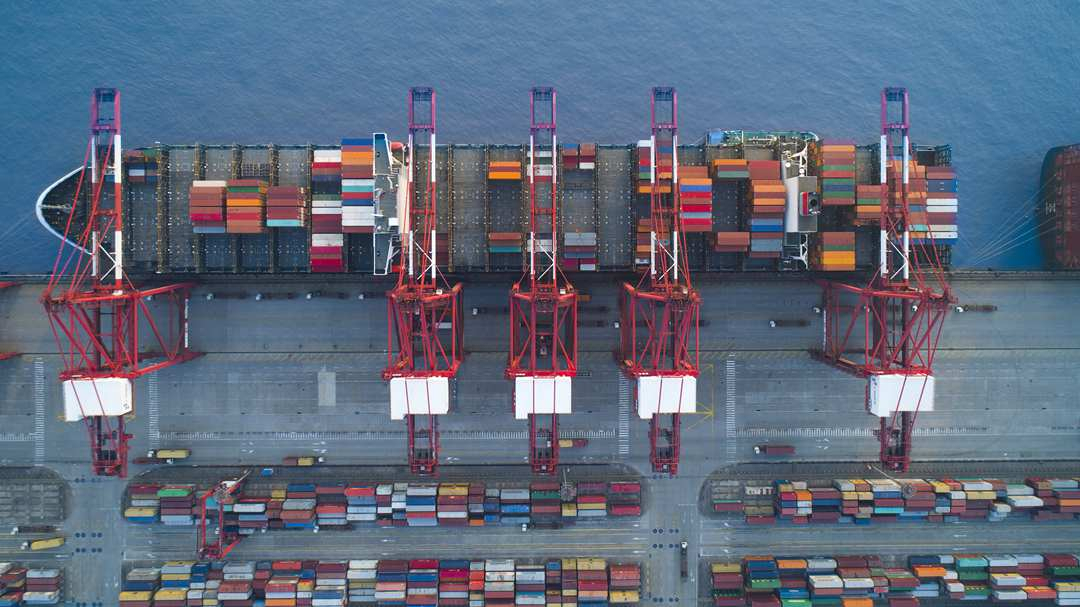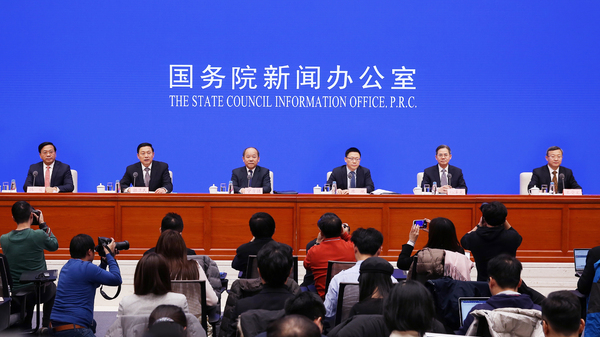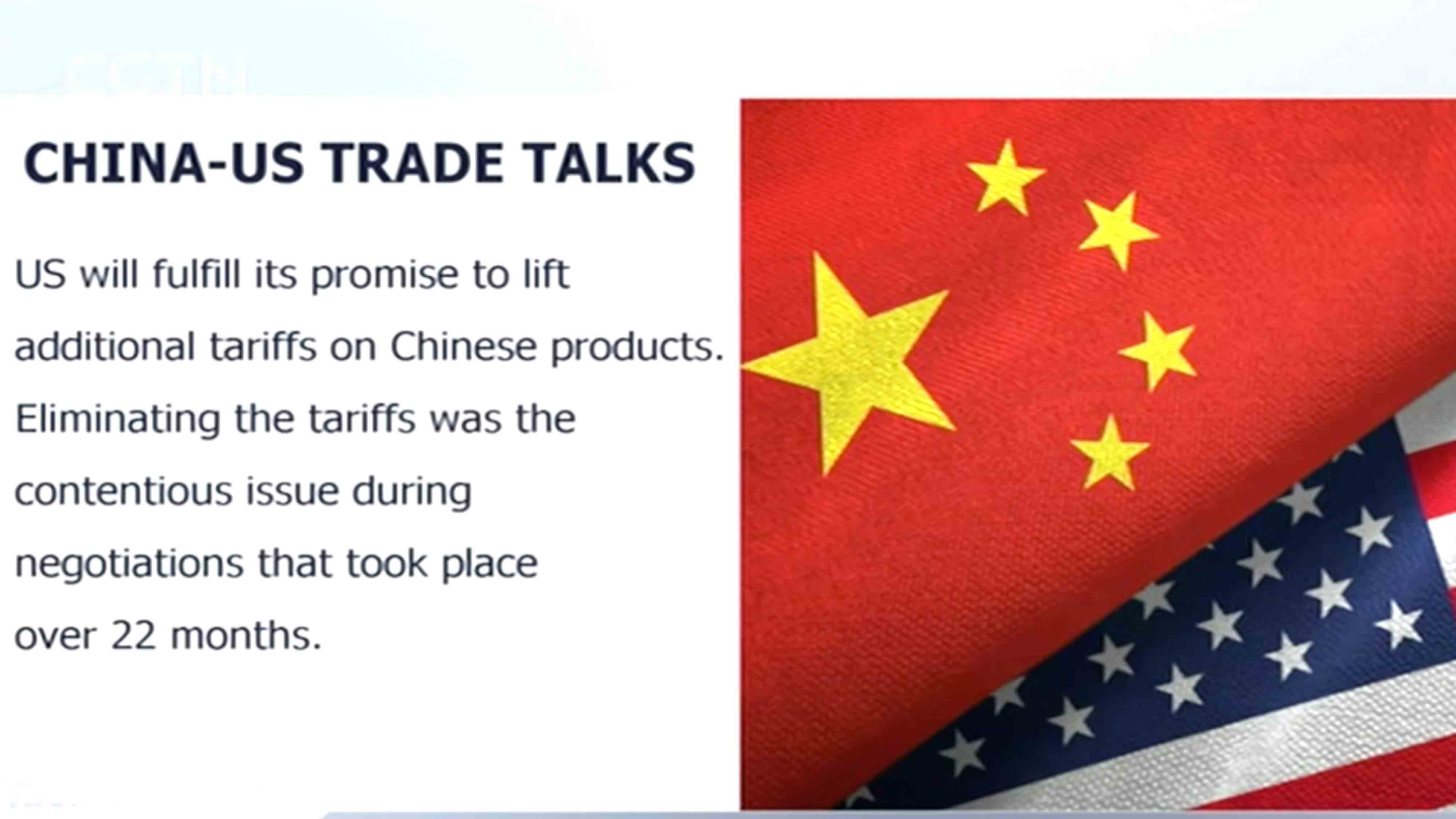China and the United States have agreed on the text of a phase one economic and trade agreement, based on the principle of equality and mutual respect, according to Chinese officials on Friday.
The text includes nine chapters: the preface, intellectual property rights, technology transfer, food and agricultural products, financial services, exchange rate and transparency, trade expansion, bilateral assessment and dispute settlement, and the final terms, according to a statement issued by the Chinese side.
China agreed to increase imports of U.S. agricultural products, and the latter will gradually eliminate its tariffs on Chinese goods, said Wang Shouwen, vice-minister of commerce and a deputy international trade representative, at State Council Information Office's press conference.
"The U.S. tariffs will undergo a change from going up to going down," said Wang.
02:01

A deal to pause 22 months of trade tensions
The Chinese side believes that China and the United States, the world's two largest economies, must deal with bilateral economic and trade relations having the big picture in mind.
Reaching the agreement will serve the fundamental interests of both countries and the world, and it will bring a "positive effect" on global trade, world economy, investment, and financial market, Wang said.
"The two countries should abide by the agreements and make efforts to implement the phase one deal well," he urged, adding that the deal will be conducive to the two countries' strengthening cooperation in trade.

The agreement is generally in line with the main direction of China's deepening reform and opening-up, as well as the internal needs for advancing with high-quality economic development.
The implementation of the agreement will help enhance intellectual property rights protection, improve the business environment, expand market access, better safeguard the legitimate rights and interests of all companies, including foreign firms in China, and protect the legitimate rights and interests of Chinese firms in their economic and trade activities with the United States, the statement stressed.
Chinese enterprises will import more high-quality and competitive goods from the U.S., said Ning Jizhe, vice-minister of the National Development and Reform Commission.
On the other hand, the U.S. needs to ensure supply capacity, improve product quality and price competitiveness, and meet relevant Chinese regulatory requirements.
The expansion of trade cooperation should be under the WTO rules as well as market rules and business principles, said Ning.

The State Concuil Infomation Office of the People's Republic of China holds a press conference on December 13, 2019. /SCIO Photo
The State Concuil Infomation Office of the People's Republic of China holds a press conference on December 13, 2019. /SCIO Photo
Phase two negotiations depend on phase one implementation
Both sides have agreed to complete their necessary procedures including the legal review, translation, and proofreading as soon as possible, and discuss the detailed arrangements for officially signing the agreement.
Once the deal is signed, China will increase imports of agricultural products from the United States, including soybeans, pork, poultry, wheat, and corn. In turn, the U.S. will import pears, oranges, and fresh dates from China. The U.S. also pledged to lift some restrictions on Chinese aquatic products.
"The phase two negotiations will depend on the implementation of the phase one agreement," said Vice Finance Minister Liao Min, adding that China's core concern in economic and trade negotiations has been the removal of additional tariffs, and both sides have reached consensus in this regard.
01:25

(With input from Xinhua. CGTN's Zheng Yibing contributes to the story.)